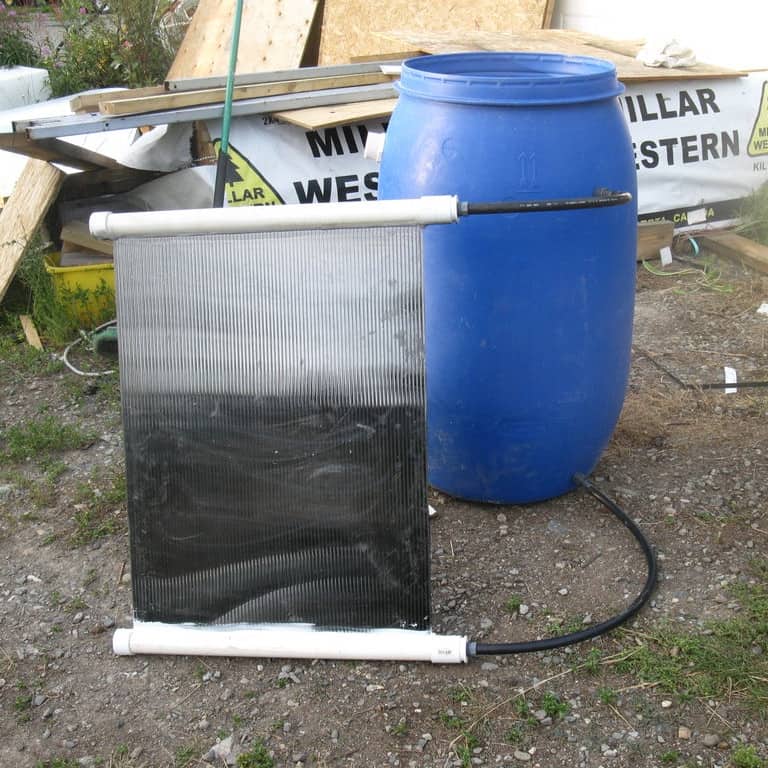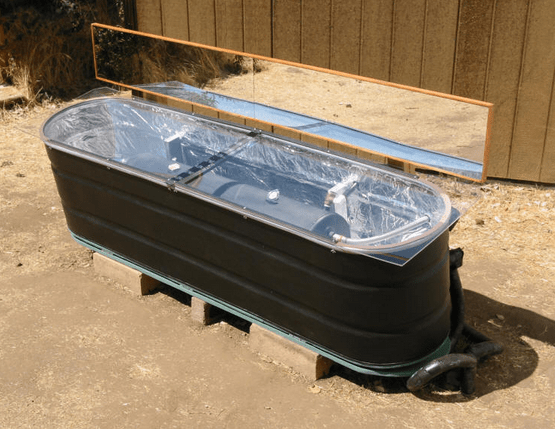
 5
5




"Plan for the worst, hope for the best." David Holmgren




 1
1




 1
1








 3
3





 10
10







How Permies works: https://permies.com/wiki/34193/permies-works-links-threads
My projects on Skye: The tree field, Growing and landracing, perennial polycultures, "Don't dream it - be it! "
 14
14




So I need a real low-tech, lightweight, super simple design. BUT, I don't want to use just any black plastic container, because I now most plastics don't do well in direct sunlight (the plan is to reduce my elecricity consumption, not to add more microplastic to the world).
Visit Redhawk's soil series: https://permies.com/wiki/redhawk-soil
How permies.com works: https://permies.com/wiki/34193/permies-works-links-threads
 4
4




Invasive plants are Earth's way of insisting we notice her medicines. Stephen Herrod Buhner
Everyone learns what works by learning what doesn't work. Stephen Herrod Buhner
 5
5




![Filename: download-17.jpg
Description: 20L tank over a fire [Thumbnail for download-17.jpg]](/t/181177/a/179155/download-17.jpg)
![Filename: Img_3570.jpg
Description: Chip heater [Thumbnail for Img_3570.jpg]](/t/181177/a/179156/Img_3570.jpg)
![Filename: download-16.jpg
Description: funnel heater [Thumbnail for download-16.jpg]](/t/181177/a/179157/download-16.jpg)
John Daley Bendigo, Australia The Enemy of progress is the hope of a perfect plan
Benefits of rainfall collection https://permies.com/t/88043/benefits-rainfall-collection
GOOD DEBT/ BAD DEBT https://permies.com/t/179218/mortgages-good-debt-bad-debt
 11
11




sow…reap…compost…repeat












 3
3




Jay Angler wrote:
However, anytime water is being heated, beware of the risks of it going boom! Make sure you design in some sort of expansion room/overflow pipe with a place for the flow to go!
How Permies works: https://permies.com/wiki/34193/permies-works-links-threads
My projects on Skye: The tree field, Growing and landracing, perennial polycultures, "Don't dream it - be it! "
 3
3




Argue for your limitations and they are yours forever.
 5
5




 6
6




Anne Miller wrote:Just using a long garden hose left sitting in the sun for several hours can produce a lot of hot water.
I am guilting of this when trying to water plants in the late afternoon.
Rig an overhead container to be filled with this hot water would work.
Since I have never been to France I know nothing about the weather there.
Katherine
 7
7




Jay Angler wrote:Pierre Ma wrote:
So I need a real low-tech, lightweight, super simple design. BUT, I don't want to use just any black plastic container, because I now most plastics don't do well in direct sunlight (the plan is to reduce my elecricity consumption, not to add more microplastic to the world).
Also be aware that some hoses are considered "potable" and some not. Some hoses can have pretty nasty stuff in them and heat may encourage that stuff to enter the water more easily.
De-fund the Mosquito Police!
Become extra-civilized...
 8
8




They don't think it be like it is, but it do.
 6
6




Travis Tambay Kano wrote:This may be over simplifying it, but when we lived in the Philippines we would just heat up some water in a kettle as-needed (via propane stove.) For showering we used the Tabo method: mix the hot kettle water with some cold water in a bucket and use a pitcher to pour it over yourself. Same thing to wash dishes except a different bucket.
It was supposed to be a temporary thing, I was certain I would need to get an on-demand hot water heater at first but found that I actually preferred it. It uses so much less water than an overhead shower and works just as well.
Plus, you probably already have a stove and kettle, (we got the largest one we could find from a restaurant supply store) but you could also just use a pot.
For our off grid camp here in the states we're going to do the exact same thing.
Katherine
 1
1




 8
8




Trees are our friends
 6
6




Clear skies,
Brad Vietje
Newbury, VT
 6
6




 5
5




 2
2




Ron Barnes wrote:Really simple, low tech, very hot water. Coil a black rubber hose, say 100ft of 5/8 inch in a single layer(holds 0.57 gal), on the roof or other sun exposed surface. Cold water in, hot water out. for winter use cover with a plate of glass and protect the sides (do not let anthing shade the hose). the rubber hose is usually not damaged by freezing, and can be drained if this becomes a problem. frozen black rubber will thaw in just a few minutes or hours after exposure to sunlight. Do not try to put this water directly on your skin mix it with cold water. It gets very hot! If you need a larger quantity just attach more hoses together or increase the diameter of the hose ( 100ft of 1 inch hose holds 4 gallons). All black rubber hose does not crack or break like the plastic and combination material hoses. You do not want or need reinforced rubber hose, just pure rubber.
De-fund the Mosquito Police!
Become extra-civilized...
 3
3




Argue for your limitations and they are yours forever.
 4
4




Kelly Finigan wrote:Hi Pierre,
I note many replies are suggesting propane et for heating but since you want to insulate from energy prices, and the whole permie ethic of "earth care", I'm presuming you don't want to use fossil fuels to save electricity.
A real simple answer is to use TWO of the solar kits you can find in France if one is not big enough...just double it up!
If you want another step of complication (but not really complex), there is coiled copper tubing like this link...https://siamagazin.com/diy-solar-thermal-copper-coil-water-heater-easy-diy/
let us know what you ultimately do - - it will be good for everyone to know options and how they pan out for you.
good luck!

"Plan for the worst, hope for the best." David Holmgren
 4
4




Kelly Finigan wrote:
A real simple answer is to use TWO of the solar kits you can find in France if one is not big enough...just double it up!
De-fund the Mosquito Police!
Become extra-civilized...
 2
2




Blessings,
Alana
 4
4




 5
5




 2
2




 1
1





|
a tiny voice in my head can't shut up about this tiny ad:
The new purple deck of permaculture playing cards
https://www.kickstarter.com/projects/paulwheaton/garden-cards
|








